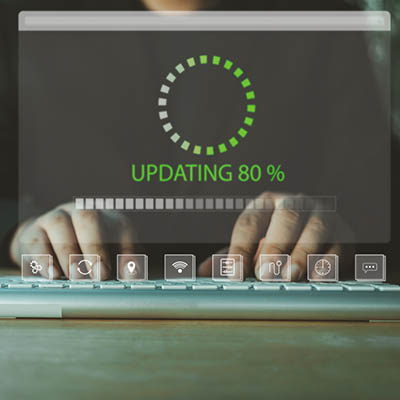Let’s face it, your business probably can’t remember the last time it used that old fax machine sitting in the corner. It’s taking up precious time, money, and resources that could be reinvested into other parts of your business. Don’t believe us? Here are three reasons why you should ditch the fax machine.
You might have IT staff in the office, but that doesn’t mean that all of your problems are handled with the time, speed, and attention they deserve. Your people might be overworked and overwhelmed by the amount of work demanded of them, and having coverage at all times comes at a cost—a cost that your technicians (and your business) aren’t willing to pay. Outsourcing helps you make up for this deficit in a way that’s both kind to your team and helpful for your budget.
If your business’ technology seems to be a-okay, the thought of updating it may seem unnecessary. This is decidedly not the case. Updates are what keep your business functioning (and therefore, profitable), while every skipped update opens you up to vulnerabilities, bugs, and much more severe consequences when you experience a true threat.
Updates are critical for the continued utility and security of any computer system or program. That said, updates aren’t always perfect. It’s possible that even a routine update could sideline your critical applications. If this happens, you’re dealing with downtime and failing to serve your customers… all because you were trying to do the right thing and maintain your technology. Make no mistake: updates are crucial, so to make sure they don’t disrupt your business, they need to be approached with strategy and discipline.
Having trouble diagnosing issues with your computer? It could be the operating system, or it could be a piece of software you installed on it, OR it could be a driver or another peripheral connected to it. How do you know what the issue is, and how do you address it? That’s where Safe Mode comes in; you can boot your operating system in its most basic form, allowing your managed service provider to more easily determine the problem.
When it comes to your technology, can you honestly say you have a plan? Or do you just pick things up that you think you need without a second thought? If your business doesn’t take technology acquisitions seriously, you’re setting yourself up for failure—and that’s where an IT roadmap presents a ton of value.
Wi-Fi is everywhere, and only when it’s not available (and you’re in a location where you cannot get cell service) do we realize just how much of a luxury it is to have a solid connection. You can give your team the solid wireless connection it deserves by carefully selecting where you place your organization’s router. Here are a few tips you can consider when placing your office’s wireless router.
Business technology can often put business owners in a tough spot. There are dozens of options out there in terms of hardware and software alike, each promising earth-shattering changes… many with an equally earth-shattering price tag. This presents a significant dilemma for business owners. While the goal is to innovate and empower their teams, it can seem like many of these tools are simply not worth the investment, but at the same time, denying access feels like denying innovation. The solution to this dilemma, however, is fortunately simple: leaning on data to inform your decisions and enable yourself to say the dreaded two-letter word: “no.”
You probably want a certain onboarding experience for any new hires: meeting the team, getting their computer set up, setting up all necessary accounts, and going through any necessary training. In reality, you’re likely going to spend most of that time ensuring secure access to all necessary resources, and until they get into the swing of things, they’ll feel a little awkward and out of the loop rather than a part of the team. Here’s how you can build a better onboarding process to make sure this doesn’t happen.
When considering the strengths of shapes, the triangle is generally considered the strongest, its three vertices creating the optimally stable configuration. The same can be said of your business’ approach to cybersecurity. The difference is that, instead of three equal legs working together to support whoever is seated on a stool, your business’ cybersecurity relies on equal investment in three key areas: your people, your processes, and your technology. Let’s talk about how this holistic approach puts your business in the best position to stay secure, and where many organizations fall short.










